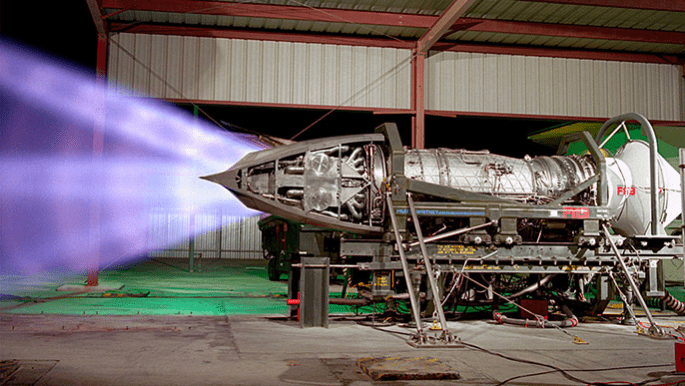Pratt & Whitey is looking at ways to extend the life and improve the performance of the F-22’s F119 engines, as the Air Force takes a “pause” on the Next-Generation Air Dominance fighter conceive to succeed the Raptor, according to executives at RTX, Pratt’s parent company.
With NGAD on hold, it’s now “even more critical that we continue to partner with the Air Force to keep the [jets’ F119] engines ready, affordable and relevant,” said Caroline Cooper, Pratt’s director of the F119 program, told reporters on an RTX call to discuss F-22 upgrades.
“If we think about what we’ve done in the past to keep the F119 ready and affordable, it really starts with how we leverage our performance-based logistics contract and what we’re doing to drive efficiencies and really integrate modernization into what we’re doing,” she said.
F-22 upgrades are largely classified, but Cooper offered insights on two areas Pratt is exploring to keep enhancing F119 performance.
A new “trade study” will capture more detailed data about how the F-22 is actually flown, better identifying strain on engine components and providing a new “single source of truth” for insight on the health of the fleet, Cooper said. The aim: “To derive learnings much quicker and help us to evaluate and optimize needed changes to the engine or aircraft in a more timely manner,” Cooper said.
“There was a major difference in the way that engine part life assumptions were calculated and how the operators were actually flying the engine,” Cooper said. “And what we were able to do is a very significant software update to really extract greater kinetic performance out of the engine.”
The software update “was incredibly valuable from a warfighter readiness perspective, because we were able to deliver this update in less than a year,” she said. “And from a taxpayer perspective, [the enhancement came] at no additional cost.” She said Pratt hopes to apply this same approach to the F135 engine, which powers the F-35 fighter, to better align maintenance with actual usage.
On the F-22, “We were able to digitally combine real engine flight data with our state-of-the-art engineering maintenance algorithms to basically determine exactly when the engine is going to need maintenance,” she said.
“Again, this is really a great example of achieving a high degree of readiness, because we didn’t…assume that maintenance would be needed earlier or later than need…We’re looking at $800 million in life cycle cost savings over the life of the program” as a result.
Second, she said Pratt is partnering with the Air Force “to think about what new technologies we can bring to bear and leverage what we’re doing across Pratt & Whitney in the additive space,” she said, referring to the emerging manufacturing technology commonly known as “3-D printing.”
“How can we redesign critical mission parts additively?” she said. “This will be significant, I think, if you if you look across…the defense aerospace industry, and you take a look at what we’re experiencing from a supply chain perspective, this will help immeasurably to streamline those efforts.”
Additive parts production will also “help to cut down on production times and, significantly, cost,” she said.
The F119, which is unique to the F-22 and which Cooper described as “the first fifth-generation engine,” has amassed more than 900,000 engine flight miles, she said. Among its attributes is the ability to “supercruise,” or to fly faster than the speed of sound without engaging an afterburner. The Raptor’s F119 has a two-dimensional pitch vectoring nozzle exhaust system, giving the jet unmatched maneuverability, “without compromising critical mission range.”
The F119 is “a really easy engine to maintain,” she asserted, adding “it only takes a handful of parts.”
Asked if there are other major initiatives to keep the F119 healthy beyond 2030—which, as recently as the past few years was seen as its likely retirement date—a decision that now seems unlikely—Cooper said “where we’re focused is honestly just continuing to meet or exceed our customer commitments today.”
“We’re again leaning in and being as proactive as we can to complement what they’re doing on the aircraft side with what we can do on the propulsion side,” Cooper said. “We are cognizant of what the Air Force is saying in the public and what the Air Force is saying to us, and we’re trying to make sure that we plan accordingly.”
